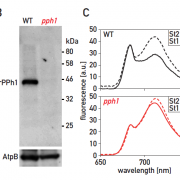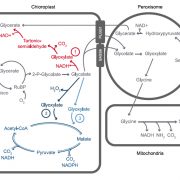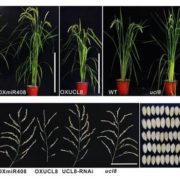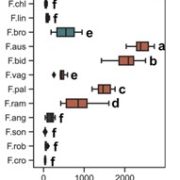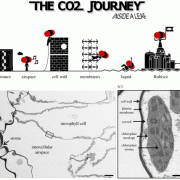Boosting C4 photosynthesis and productivity by elevating Rubisco levels in sorghum and sugarcane
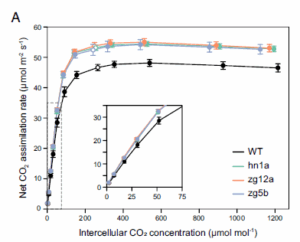 The United Nations projects that by 2050, global food production must increase by 60% to meet growing demand, a goal that must be met under the pressures of global climate change and without further agricultural land expansion. With rising atmospheric CO₂ levels, Rubisco has emerged as the primary limitation to light-saturated leaf CO₂ assimilation rates (Aₛₐₜ) in C₄ crops, which represent a significant share of global agricultural output. Salesse-Smith et al. overexpressed the Rubisco small subunit (RbcS) alongside Rubisco accumulation factor 1 (Raf1) genes in both sorghum and sugarcane, increasing their photosynthetic efficiency and productivity. The authors reported that transgenic upregulation of RbcS and Raf1 led to a 13-25% increase in Rubisco abundance in sorghum and up to 90% in sugarcane. Additionally, co-upregulation of RbcS and Raf1 correlated with increased maximum in vivo Rubisco carboxylation rates (Vc,max), CO2 assimilation, and photosynthetic light induction. For both species, Aₛₐₜ increased by 12–15%, and Rubisco enzyme activity rose by approximately 40%. In sorghum, these changes also led to faster photosynthetic induction and reduced bundle sheath leakiness. A field trial in sorghum confirmed these results, which translated into a 15.5% increase in biomass accumulation, while greenhouse-grown sugarcane showed a 37% to 81% increase. This study presents valuable means to enhance the productivity of these C4 crops as global atmospheric conditions evolve and sets the ground for testing Rubisco upregulation in elite cultivars and hybrids in multilocation and multiyear yield trials. (Summary by Elisa De Meo, www.linkedin.com/in/elisa-de-meo-25415a20b) PNAS, 10.1073/pnas.2419943122
The United Nations projects that by 2050, global food production must increase by 60% to meet growing demand, a goal that must be met under the pressures of global climate change and without further agricultural land expansion. With rising atmospheric CO₂ levels, Rubisco has emerged as the primary limitation to light-saturated leaf CO₂ assimilation rates (Aₛₐₜ) in C₄ crops, which represent a significant share of global agricultural output. Salesse-Smith et al. overexpressed the Rubisco small subunit (RbcS) alongside Rubisco accumulation factor 1 (Raf1) genes in both sorghum and sugarcane, increasing their photosynthetic efficiency and productivity. The authors reported that transgenic upregulation of RbcS and Raf1 led to a 13-25% increase in Rubisco abundance in sorghum and up to 90% in sugarcane. Additionally, co-upregulation of RbcS and Raf1 correlated with increased maximum in vivo Rubisco carboxylation rates (Vc,max), CO2 assimilation, and photosynthetic light induction. For both species, Aₛₐₜ increased by 12–15%, and Rubisco enzyme activity rose by approximately 40%. In sorghum, these changes also led to faster photosynthetic induction and reduced bundle sheath leakiness. A field trial in sorghum confirmed these results, which translated into a 15.5% increase in biomass accumulation, while greenhouse-grown sugarcane showed a 37% to 81% increase. This study presents valuable means to enhance the productivity of these C4 crops as global atmospheric conditions evolve and sets the ground for testing Rubisco upregulation in elite cultivars and hybrids in multilocation and multiyear yield trials. (Summary by Elisa De Meo, www.linkedin.com/in/elisa-de-meo-25415a20b) PNAS, 10.1073/pnas.2419943122


